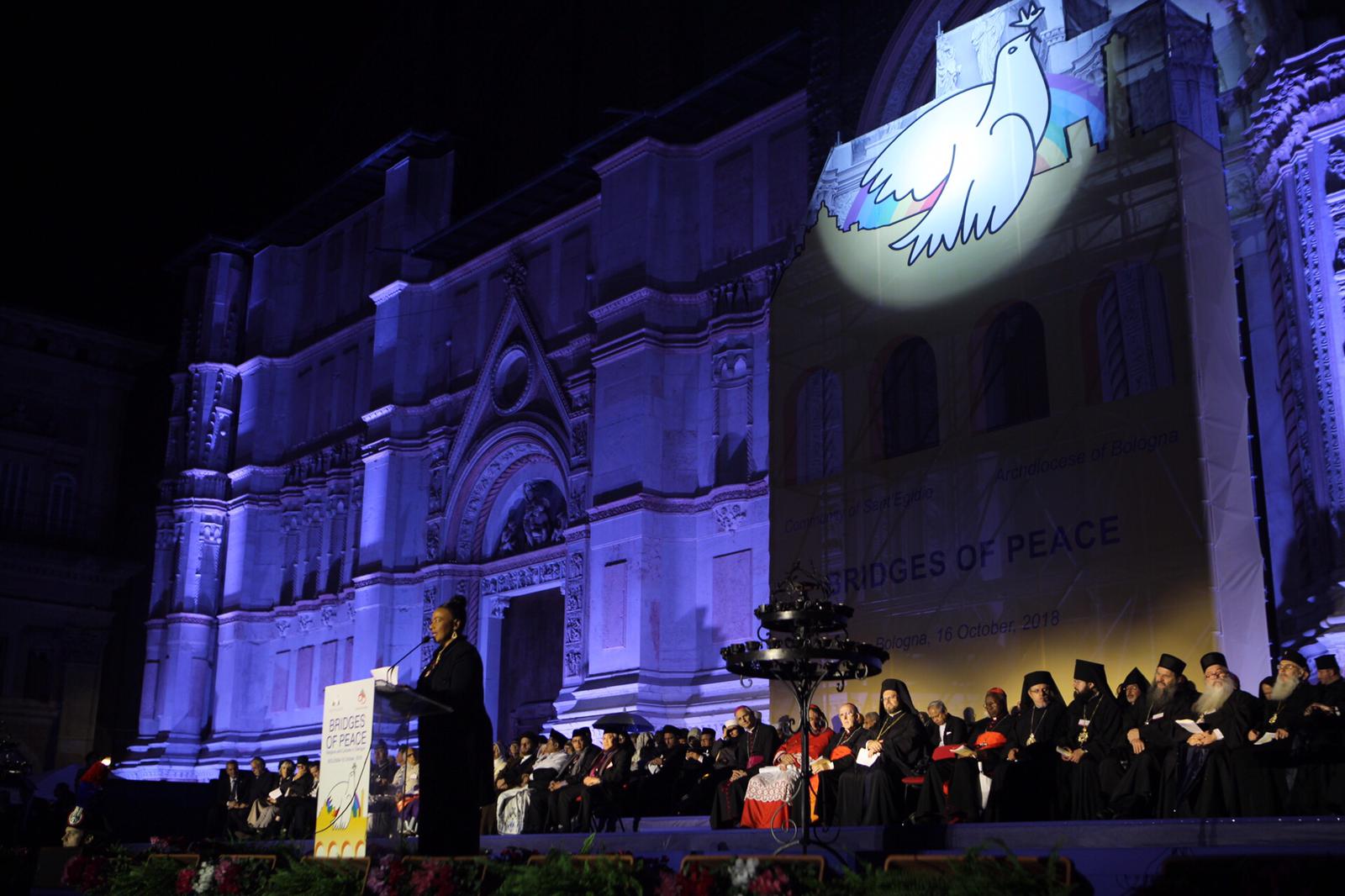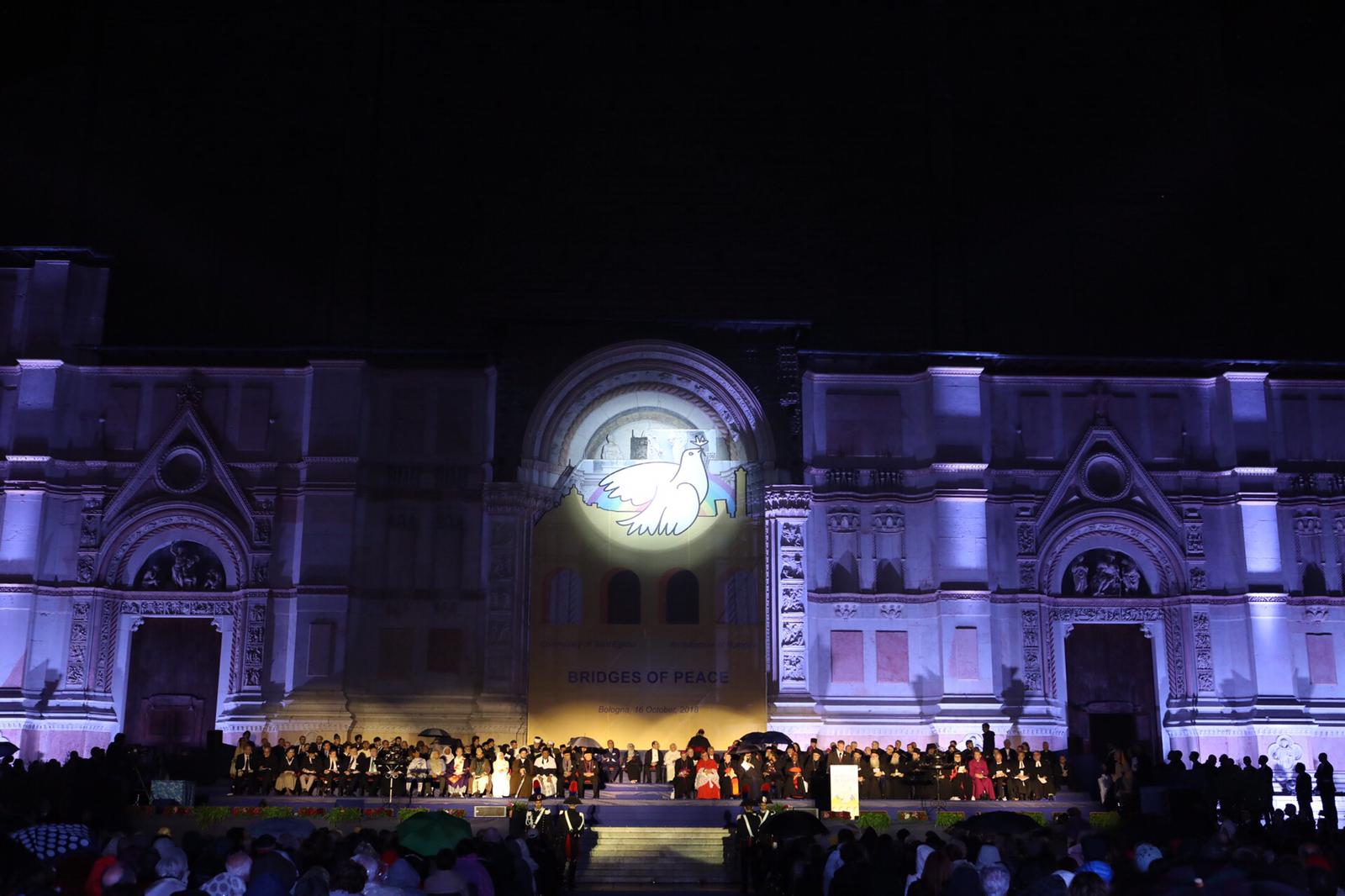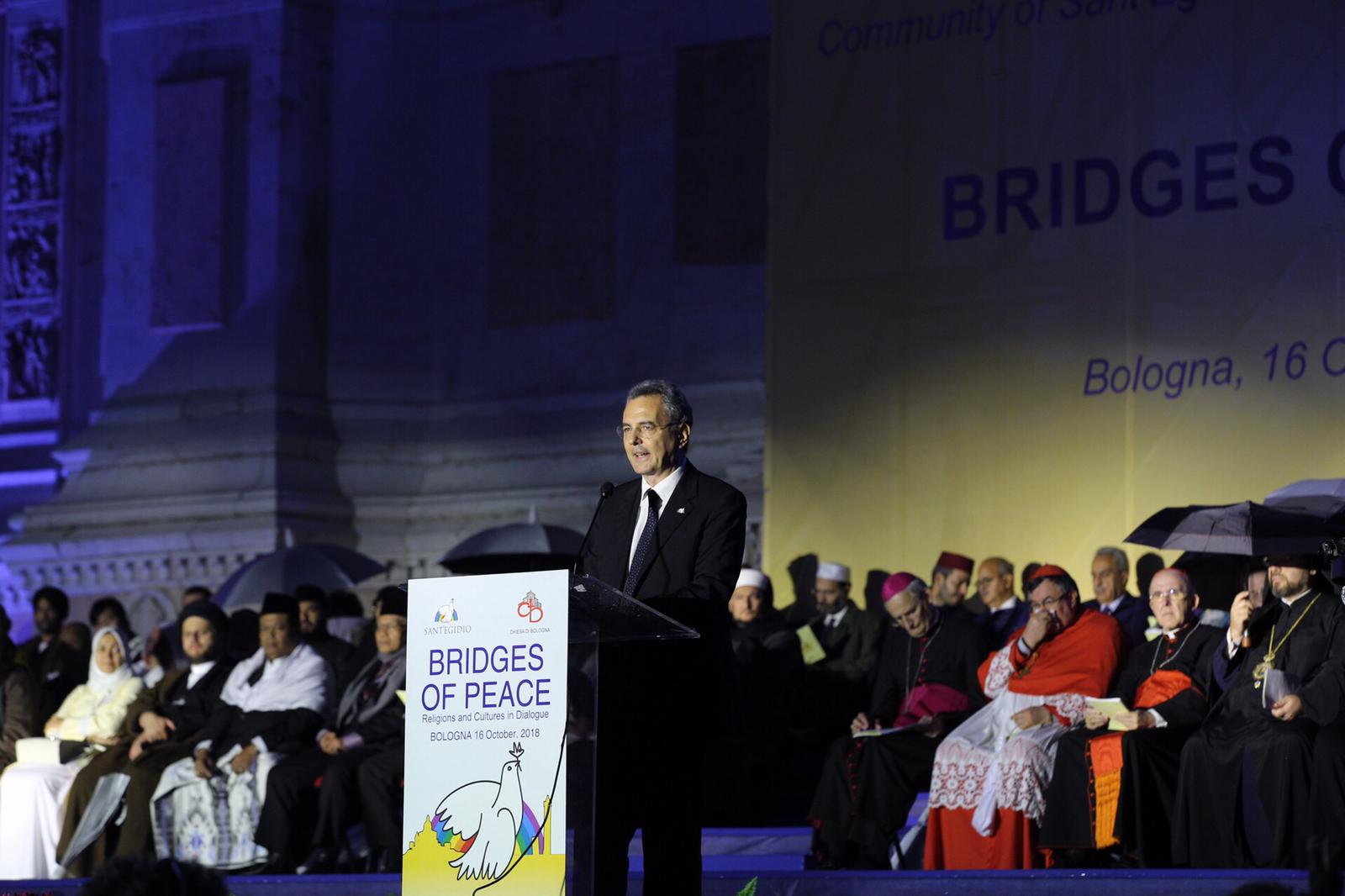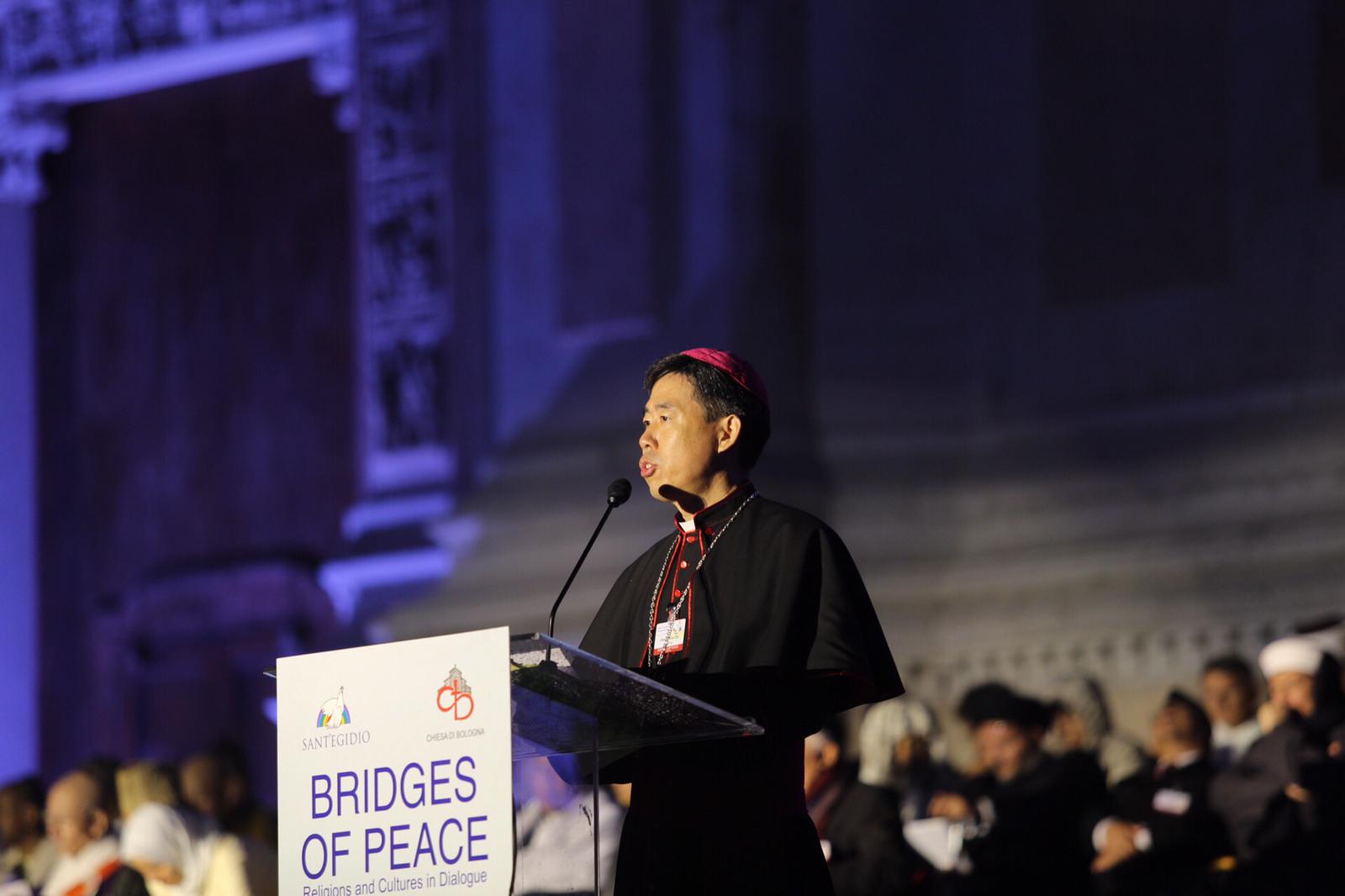
Building Bridges! Yes, obviously—but between whom? The first, obvious answer would seem to be: religions—between religious communities and their members—that is primarily why we are gathered here in Bologna. Religions shape the ways in which we act and think, they shape our cultures and life forms. They differ from one another in ways which do call for bridge-building.
In Finland, The National Forum for Co-operation of Religions (CORE) was founded in 2011—only in 2011, one could say. The establishment of CORE was the fruit of ten years of informal discussions between the leaders of Finlands’s main religious groups. Following the tragic events of 9/11 in New York, former President of the Republic Ms Tarja Halonen had played an important role in inviting religious leaders to meet regularly.
While Finland has been—rather like other Nordic countries—a country with a strong Christian and specifically Lutheran identity, it is also, perhaps somewhat surprisingly, of all these the country with the longest tradition of Jewish and Islamic minority presence. From 1809 till 1917 Finland was an autonomous Grand Duchy within the Russian Empire, and in that context Finland saw the immigration of a few thousand Jews and Muslim Tatars. The integration (not assimilation!) of these groups into Finnish society is clearly a success story. There was no particular need to build any bridges. What was required of Finnish society was simply legislation (full religious freedom dating back to the Freedom of Religion Act of 1923). The communities themselves name three factors as significant for success: first, both communities had already been minorities in their country of origin; secondly, a decision on their part to stay and not return; and thirdly, the opportunity-cum-necessity of having to roll one's sleeves and start working as social security was for all practical purposes nonexistent.
There have never been clashes between these early Finnish Muslim and Jewish communities. On the contrary, mutual respect has prevailed. At some time during the twentieth century the Jews and the Tatars began a tradition of staging football matches between these two communities, a tradition surviving until today. Both communities are among the five founding members of CORE.
The other three founding members are my church, i.e. the Evangelical-Lutheran Church of Finland, the Finnish Ecumenical Council (founded, incidentally, as early as 1917) and the Islamic Council of Finland (SINE). Finland, a country with a total population of circa 5.5 million inhabitants, has relatively recently (i.e. since the 1990s) seen the immigration-based birth of a new Muslim population of approximately 80.000 to 100.000 persons, the most important representative of which, in inter-religious terms, is SINE. And this is where bridge-building is especially called for.
I began by asking who are the ones needing bridges between them. My answer was: they are needed between religions, religious communities, and their members. Yet even more important, in my opinion—in Finland as well as elsewhere—is to build bridges between religions and society-at-large—whether it be in the form of political power, civic society, public debate, or—perhaps particularly saliently—the media.
When opening the 1st Indonesian-Finnish Bilateral Interfaith and Intermedia Dialogue in Helsinki last month I said: ”In popular discourse and in media, religions are often portrayed as part of the problem, not the solution. Religions are seen as a threat to security, by their nature: a collision of different forms of life and concepts of reality is feared when religions are seen as rivals, each looking after a monopoly of truth.” Therefore information and visual materials of any and every situation where we find ourselves together on the bridge, must be shared and distributed as efficiently and with as great determination as possible.
The Sant'Egidio prayers for peace represent in this respect a certain kind of top layer—which is fine. These encounters are extremely important. It should be clear to all of us, however, that the most essential level in terms of bridge-building is the one where ordinary people live their daily lives. Let me share with you the words of Afrah Al Bayaty, spokesperson of the Islamic Community of Turku, the city I call my home, about what matters locally in terms of building bridges:
”We all want peace between each other. Human’s most important need is to become appreciated. This only requires small actions, small but basic actions of good behavior. Like; greeting the other person back, even when he or she calls you over the phone with such a strange name you do not know. Do not be scared. Saying hello back does not take anything away from you. You will get to know each other. It only needs the responsive ’hello’ back. Small thing, but means a lot. We are not strangers to each other. We are neighbors, colleagues, we sit near each other in the bus, our kids play in the same school.”
We may assume that something has been done the right way in Turku, for after all the bridge did not snap in two in August last year. That is when a young man, an asylum seeker, stabbed ten people at the market square. Two of them died. It soon became obvious that the perpetrator justified his act with religion. This incident in Turku was the first of its kind in Finland . What did—and did not—happen?
An insipid attempt at whipping up a demonstration against immigration and asylum seekers came to naught. On the other hand, the very same night representatives of different religious communities gathered in Turku Cathedral and condemned the violence. The next day, media – local media in particular – highlighted how people of different religious and ethnic backgrounds helped and protected the victims and tried to stop the attacker. In the words of the Chair of the Tatar Community: "If this had to happen, it is good it happened in Turku."
Building bridges at top layer is also important in terms of political power. CORE finances are to a significant extent dependent on the Ministry of Education and Culture, but we have good and open working relationships with the Ministries of Justice, Foreign Affairs, and the Interior. I am not entirely sure that our political parties and the Parliament quite understand the impact of interreligious encounters and co-operation on peaceful social relations. The Ministries, on the other hand, actively seek co-operation with non-governmental actors.
In the Finnish Ministry for Foreign Affairs we even have an Ambassador at large not only for intercultural but also interreligious dialogue, thus supporting religious actors role in peace efforts. The Ministry is also the main financial supporter the Network for Religious and Traditional Peacemakers, the core group of which consists of Religions for Peace, Organization of Islamic Cooperation, Finn Church Aid and KAICIID Dialogue Centre. It is evident that reconciliation is a major challenge for us as religious communities. Without reconciliation communities will not be able to distance themselves from violence and heal their relationships.
I am not quite certain whether it was Sharon Rosen who last year presented a kind of six-point "win/win" program. I specifically want to pick up and own, and have done so in what I said, two of those points as relevant for bridge-building: firstly, include other stakeholders—the media, politicians, the police. Secondly, never concentrate on apex leadership level only.
Somehow I assume that we will, always and everywhere, end up with the same kind of basics: nothing can ever replace encounter and communication between people of faith, it is the most totally inalienable element in the bridge-building mix. Also, it is equally important continually to build (and repair and improve, where that is relevant) bridges in all places of social debate and where political power resides. Religion neglected and pushed aside can indeed transform itself into a part of the problem; we, however, wish to be part of the solution.




